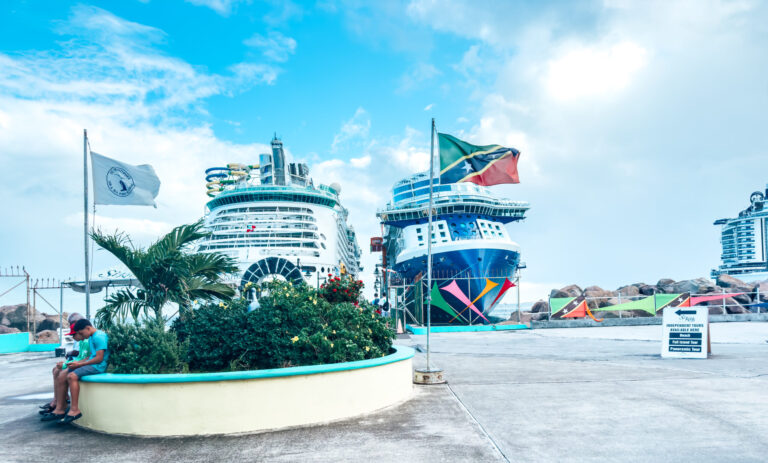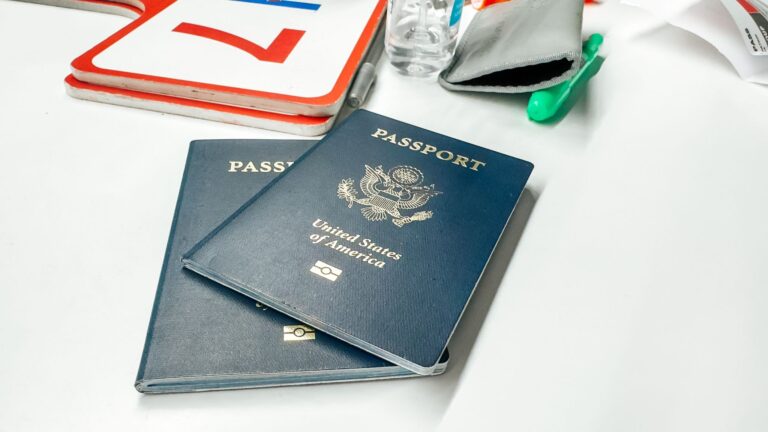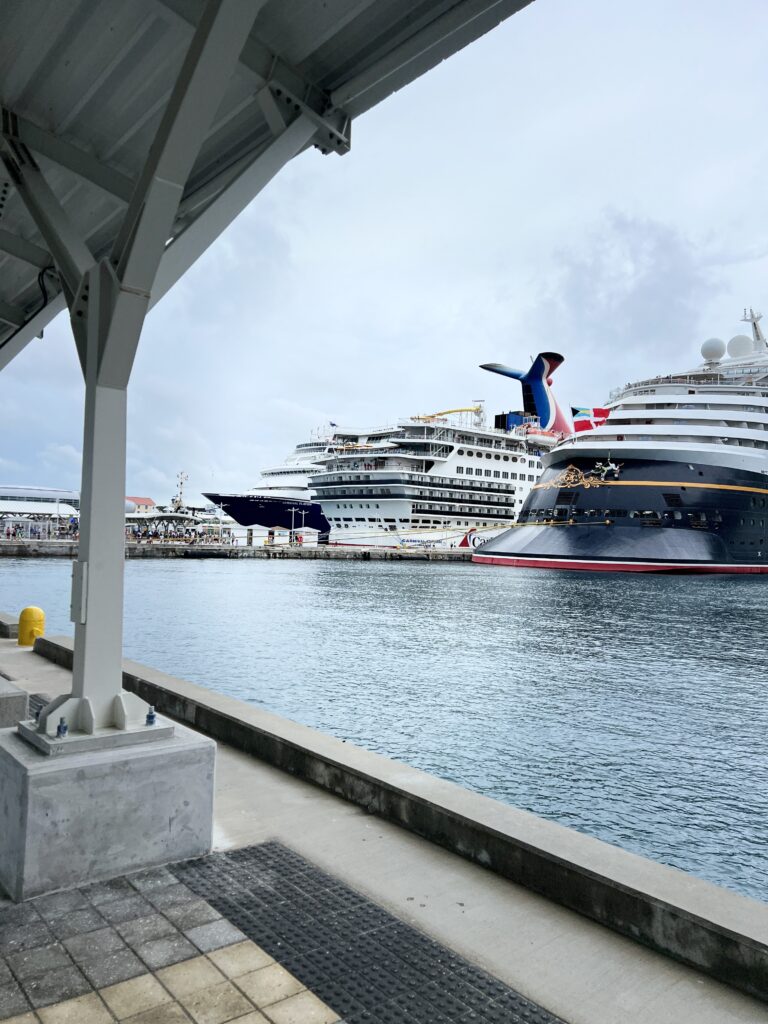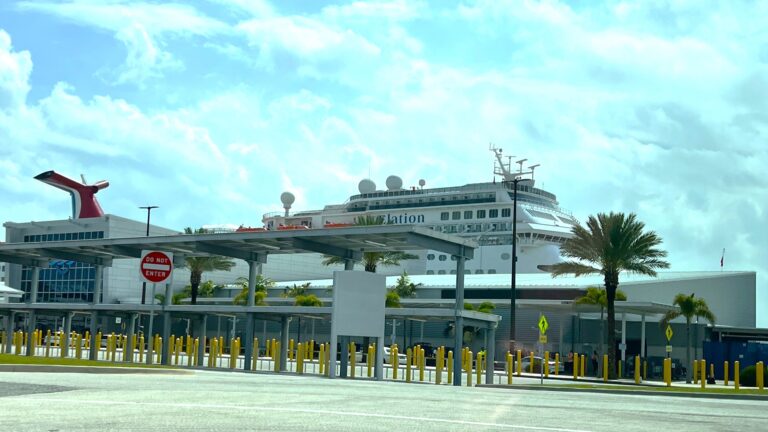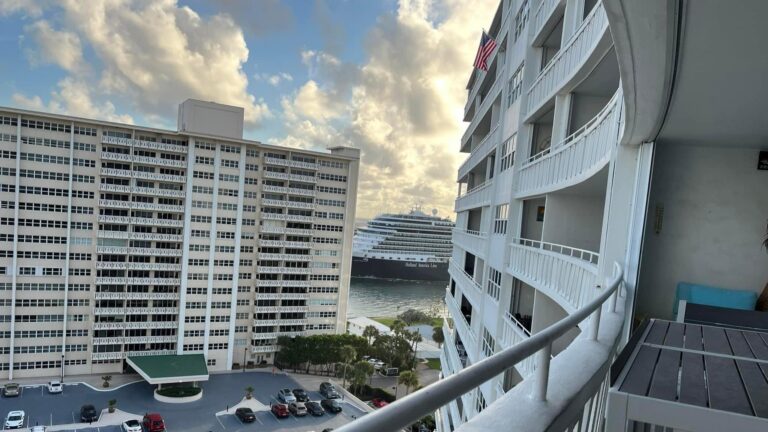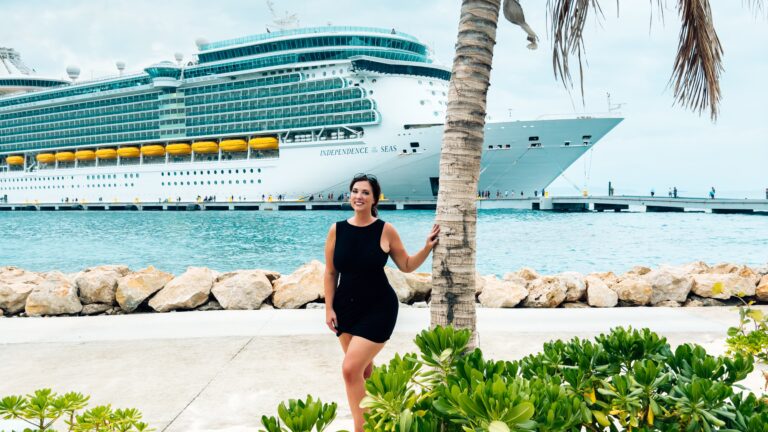What to Expect on Port Days: Getting Off and On the Cruise Ship at Ports of Call
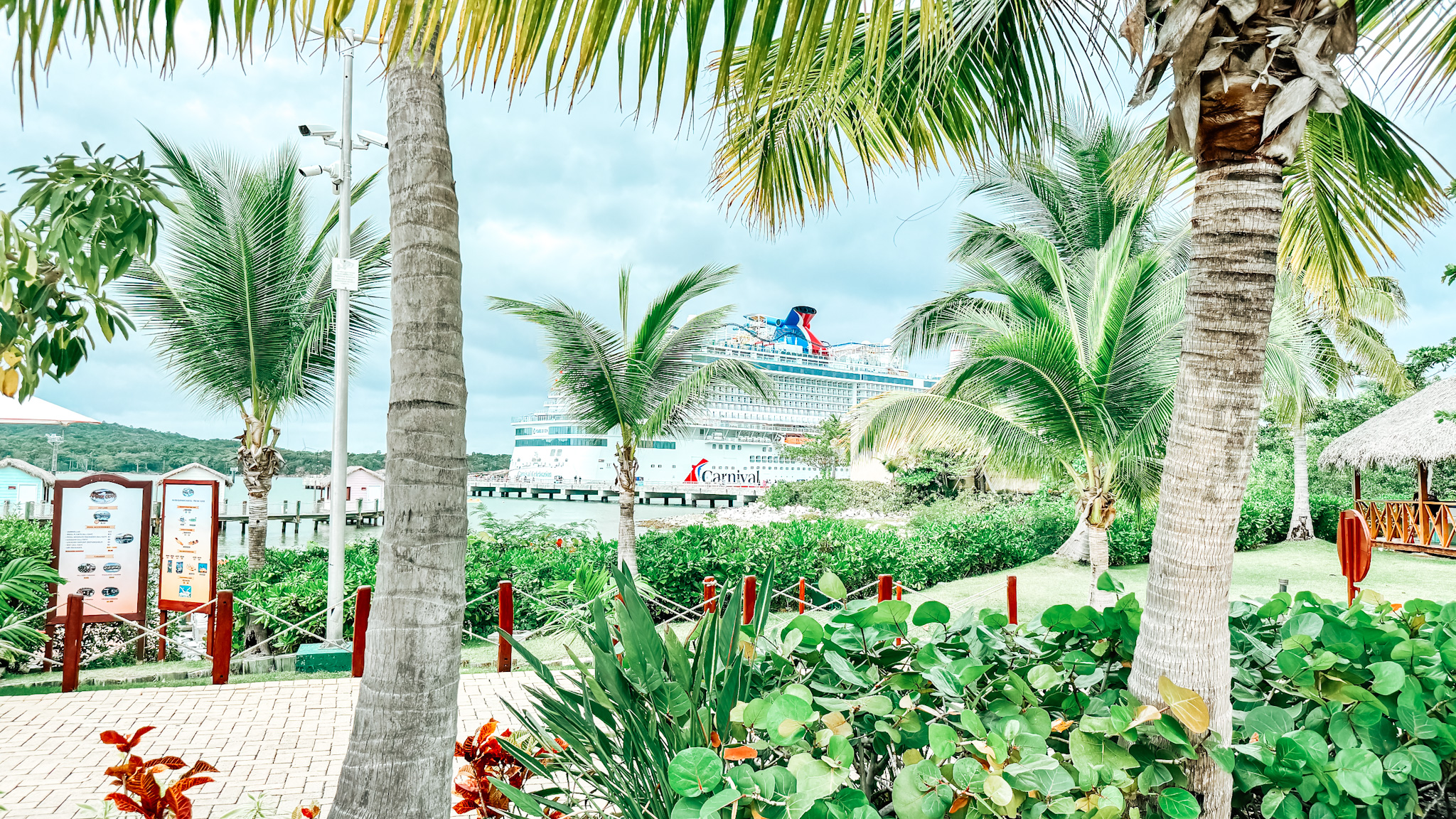
If you’ve never cruised before, you’re probably curious about what to expect on port days and how to prepare for them. Unlike sea days, when the ship is out at sea, and passengers stay on the ship without getting off at land, port days are those when the ship stops at one of the ports of call on the itinerary. When you booked your cruise, you likely selected your itinerary partly because of the planned ports of call, so this is your chance to get out and explore. Before disembarking at a port of call, here’s how you should prepare.
What’s Needed to Disembark on Port Days

You’ll need your ship card when you get off the ship (disembark) at a port of call. All cruise lines call this something different; for example, Royal Caribbean calls it a “SeaPass” card, and Carnival calls theirs a “Sail & Sign” card. Other cruise lines, like Virgin Voyages, don’t use a physical card at all, but rather a bracelet with a digital fob.
A ship card is generally used as your stateroom key and is also used to make purchases and charge to your stateroom account. You will not be allowed to get off the ship without your card getting scanned, as this is how the cruise line keeps track of which passengers are on and off the ship at any given time.
Guests generally won’t have to go through any scanner to exit the ship; the security crew will simply scan their ship card and allow them to disembark. Most ports do not allow cruisers to take food off the ship unless it is in a sealed original container (like a packaged granola bar, for example).
Documents Needed to Get Back on the Ship
While you generally only need your ship card to exit the ship, you’ll need your ship card and identification to get back on the ship. In some cases, such as with the cruise line’s private islands, you only need a ship card. If this is all confusing, don’t fret; the cruise line will typically make announcements on port days to notify cruisers of their needs. If you are traveling with children, their ship card and birth certificate (original or copy) are generally acceptable for embarking back on the ship on port days.
Because passports aren’t always needed to cruise, you may not have one. Regardless, you typically only need a valid government-issued ID and your ship card to get back on the ship. Of course, always consult your cruise documents, and listen for announcements for guidance on what’s needed, but this generally holds true in most cases and at most ports.
Do I Need to Bring My Passport at Ports?
Many cruisers wonder whether or not to bring their passports to shore on port days. My advice? No. I always bring a copy of my passport and a valid government-issued ID with me on port days, and leave my passport in my stateroom safe. Now of course, in the unlikely event that I miss my “return to ship” time and the cruise ship departs without me, leaving me stranded at port, I’ll need my real passport to fly back home from a foreign port of call. So why, then, would I leave my passport back on the ship?
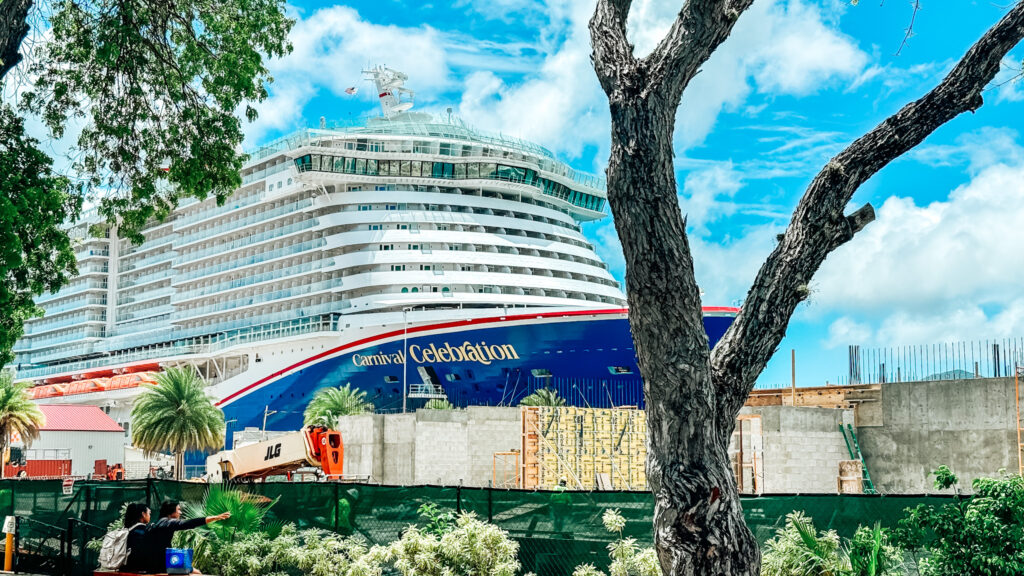
Well, acccording to John Heald, who is Carnival Cruise Line‘s brand ambassador, this line’s policy for handling passports in the case of a passenger missing the ship’s departure is this (sic): “In case of an emergency which meant you could not return to the ship we do indeed have a policy in place. Your passport would be collected from the guest cabin (including retrieving it from the safe) and by our housekeeping officers, a Guest Services officer and someone from our security team. We would then return the passport to the ships agent. We have one in every single Port who takes care of the ships needs during the time there. The agent would return the original passport to you.”
Because of this policy, I know that if I get left behind, I can retrieve my passport from the port agent and then use it to fly back home. That’s why it’s important to not just leave the passport behind in the stateroom but to specifically leave it in the stateroom safe, which is always good practice anyway to ensure it stays safe and secure. If you’re sailing with a passport, deciding whether you want to bring it to port is completely up to you.
What to Do Before Disembarking
Okay, let’s back it up a bit and talk about preparing for disembarkation on port days. Before you even step foot off the ship, here are some important things to note and consider:
Return to Ship Time
The cruise line app will specify the times of that day’s port of call, and this is critically important as it tells you not just the estimated arrival time, where cruisers will disembark, but the most important piece of information – the return to ship time. You will always want to make note of this, as the ship will not wait for you if you are late to return (with the exception of a cruise-sponsored excursion that runs late; you can read more about this here).
Local Time vs. Ship Time
Note that ship time may vary from the local port time. The ship always goes by ship time, so be careful to note any differences, especially if your phone automatically updates the time once at port to the prevailing local time. Some cruisers disable their phone’s time auto-update feature to ensure that it always stays aligned with ship time, but whatever method you choose, always remember that local time may differ from ship time and, again, do not miss that “return to ship” time. As a general rule, I personally aim to get back to port 2+ hours before the return time out of an abundance of caution.
You’ll also want to note potential time differences when booking and planning excursions. I once almost missed an excursion in Puerto Plata because I didn’t account for the one-hour time difference between my ship time (EST) and Dominican time (AST) and showed up way late.
Excursion Details
If you booked an excursion, you’ll want to confirm times and note the meeting specifics. If you book an excursion through the cruise line, you will likely receive tickets or information for that excursion delivered to your stateroom the evening before, although some cruise lines now offer digital tickets via the app only. These tickets will provide the specifics of your excursion, including meeting time and location.
If your port of call is a tender port, meaning cruisers do not exit the ship directly onto a pier but are instead transported to the port area via tender boats (these are just smaller boats), you may have a designated meeting location on the ship. Your group will then go together on the tender, with the perk of priority embarkation, which is a benefit the cruise line offers to incentivize cruisers to book through then instead of booking excursions independently.
If the port of call is not a tender port, you will have a designated meeting location at the port terminal. These areas are often clearly marked, sometimes with numbers, and cruise line employees are almost always around to help guide cruisers. If you booked an excursion on your own, including transportation from port, you may have to exit the cruise terminal entirely and meet up with your driver outside the port area.
If booking an independent excursion, be cautious not to book it too early. While the cruise line will provide a time frame for that port of call, there’s no guarantee that guests will be able to disembark at the scheduled time. Cruise ships have to get clearance from the local port authorities at each port of call, and this can sometimes be delayed for various reasons. There are also other circumstances that sometimes cause a bit of a delay.
Where Do I Disembark?
Cruise ships are gigantic and can be a challenge to navigate, even for seasoned cruisers, but the cruise lines generally make it easy for cruisers to figure out where to disembark the ship on port days. You will generally exit the ship at one of the lower levels, such as decks 1-3, and disembarkation points may be limited to certain areas of the ship (midship only, for example). The cruise line will make announcements and will often post signage throughout the ship, to direct guests of these exit points.
Port Emergency Phone Number
Many cruisers may not realize this, but there is always an emergency port agent contact number, which is good to have before disembarking. Why? While some cruise lines, like Royal Caribbean, print the emergency phone number on each guest’s SeaPass, others -such as Carnival- do not. Some cruise lines only make this information available on their app, which is inaccessible once you’re off the ship, so it’s good to note it and jot it down. The chance of ever needing it is slim, but this is definitely a number you’ll want to have if you find yourself running late and at risk of missing that critically important return to ship time.
What Else Should I Bring to Port?
You’ll likely want to bring cash. While most vendors at and around ports of call take credit and debit cards, you may find situations where it’s cash only. Or, a vendor may accept cards but offer a better price for customers who pay with cash. Generally speaking, US currency is broadly accepted, although merchants at some of the smaller, less frequented ports, such as Progreso for example, may not. Some independent excursions may only accept cash for payment if you did not pay in advance, and this is also the case for some local taxi providers.
If you’re porting at a beach location, and plan for a beach day, you’ll likely want to bring your own towels. The great news is that the cruise lines provide beach towels, but you’ll want to grab them before you disembark the ship, as not all cruise lines provide them to guests once you’re off the ship. Royal Caribbean does, and I like this, but most of the others do not.
Getting Back on Board
As noted above, you will need your ship card and a valid government ID to embark the ship at the conclusion of your port day. Children will need their ship card and birth certificate copy, although don’t be surprised if they are rarely, if ever, checked (but still have it with you!).
At the port terminal, local authorities will serve as the checkpoint to verify your ship card and ID, allowing you onto the pier. Once you return to the ship, cruise line security will scan your ship card to allow you back on board. If you purchased alcohol at port, which is a common occurrence since it’s duty-free, the cruise line will temporarily confiscate it at this point. But don’t worry—you’ll get it back upon final disembarkation!
You will go through a metal detector, and your items will be put through a scanner — sort of like going through the TSA at the airport. If you have any verboten items, such as fruits and vegetables, they will likely get confiscated. If you love buying yummy treats at ports, like delicious rum cakes in the Bahamas, don’t despair! Food is allowed, but only in its original, factory-sealed packaging.
Preparing for Port
While getting off and on a ship may seem like a lot to manage and consider, I promise it’s not that bad. Once you do it once or twice, it’s like riding a bike—or… cruising on a ship. It’s easy, doesn’t require any thought, and you never forget how to do it.

